Half The Beatles Were Left-Handed & This Is Why It Matters
It’s the Beatles’ best-kept secret.
An overlooked but profoundly significant facet of The Beatles’ distinctive sound and unparalleled musicality is that both Paul McCartney and Ringo Starr are left-handed. It’s obvious Paul played the bass left-handed when looking at live performances or photos. However, Ringo Starr set up his drum kit in the conventional right-handed configuration despite being left-handed. This decision, seemingly subtle, contributes a nuanced layer to the band that is rarely if ever, discussed.
Paul the South Paw
Paul McCartney’s musical versatility is showcased in his ambidextrous nature. While he played guitar as a lefty, he seamlessly transitioned to playing drums as a righty, a skill that likely contributed to his swift mastery of the piano. This ambidexterity became crucial in his musicianship, songwriting, and relationship with John Lennon.
During Paul and John’s songwriting sessions, they were like mirror images, facing each other as they collaborated on their newest compositions. This significantly heightened their creative intimacy as writing partners, especially in the early days as they were learning new guitar chords.
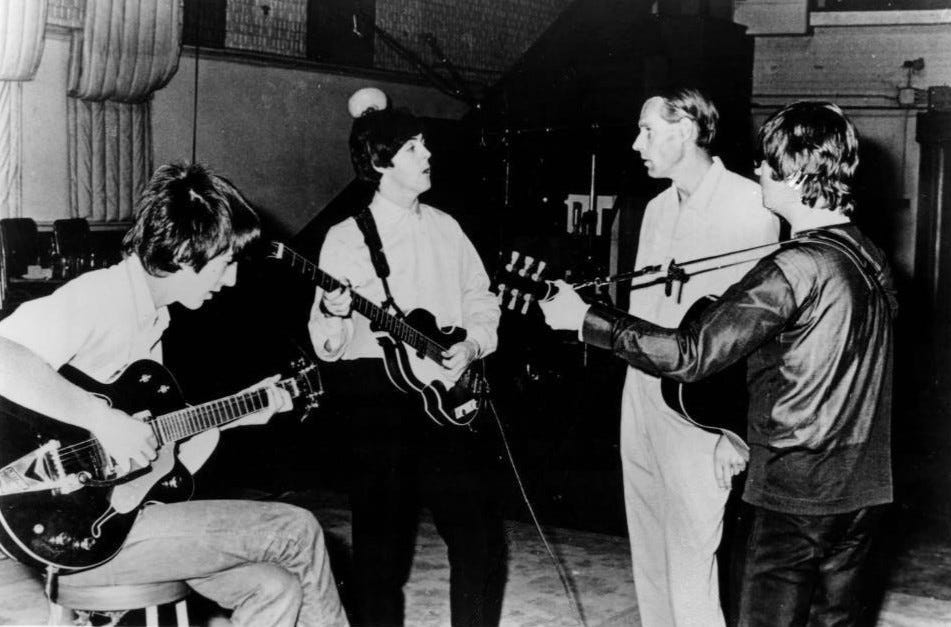
Any guitarist can tell you it’s a bit tricky learning a new chord or lick when sitting across from another right-handed player because the neck of the guitar is pointing in the opposite direction. They didn’t have this problem, and no doubt it contributed to them growing faster as musicians.
During live performances, Paul’s left-handed playing provided an unintentional bonus. His bass, positioned opposite George’s or John’s guitars, served a practical purpose. This ensured that the necks of their guitars wouldn’t crash together as they sang harmonies on the same microphone.
However, Ringo influenced an entire generation of drummers and songwriters as a left-handed musician, too.
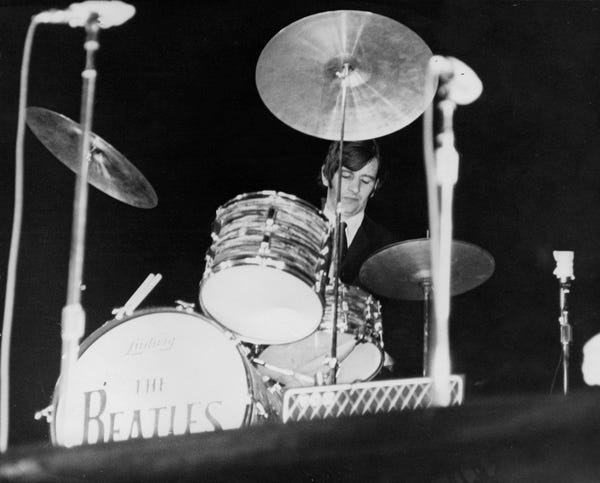
What made Ringo’s drumming so great? It’s a coincidental convergence of brilliance. How many songs can we identify by The Beatles based on the drum part alone?
The distinctive elements of iconic songs like “Come Together,” “Tomorrow Never Knows,” “Ticket to Ride,” and even the opening drum roll of “She Loves You” are unmistakable signatures.
Surprisingly, the reason behind these remarkable musical touches lies in Ringo Starr’s left-handed drumming. It’s a significant factor that instantly distinguishes and makes us recognize his unique drumming style across these timeless tracks.
So, again, What Makes Ringo Great? It’s what I call the Three ‘Rs’ of Ringo. Respect, Rhythm, and Restraint. Mix this with McCartney, and it’s the group’s best-kept secret.
R-e-s-p-e-c-t
What set Ringo apart wasn’t just his distinctive style, evolution, adaptability, and unique perspective on the drums as an instrument. Ringo Starr didn’t see the drums merely as a percussion backdrop. He recognized that the drums are a crucial element in the songwriting process even if that means the drums aren’t front and center. There were instances where he held back, as evidenced in songs like Here, There, and Everywhere. Only when you listen to the track without his drum part do you realize his vital role.
Ringo understood intuitively that Paul’s timeless melody is what made Here, There, and Everywhere so beautiful. As a result, he played a drum part that showcased his nuanced understanding of musical collaboration.
On the other hand, listen to She Said, She Said Said, or Rain (which Ringo considers his high watermark instrumentally). He is on fire! Also, remember that the final recording was slowed down significantly to provide the record’s surrealistic vocal and musical soundscape. Still, the creative, bombastic drum rolls throughout both songs are not ignored.
The key to Ringo’s approach to arranging his parts was a “JFK mindset” with a musical twist. “Ask not what the song can do for you — ask what you can do for the song.” Instinctively, he knew his role was to foster, develop, and serve the song so it could become the best recording possible. In other words, Ringo left his ego at the door.
Ticket to Ride’s iconic off-kilter-drum pattern provides an essential glimpse into this mentality. The drums are as central to the song as the chords and melody.
However, Ringo didn’t come up with the drumbeat. Paul did. Starr knew a good idea when he heard one, and instead of letting his ego get in the way, he did what was best for the record and embraced the idea. This was a common thread throughout every member. If The Beatles could be given a simple songwriting motto, it easily could be: “Respect the song above all else.”
Look no further than Something written by George Harrison. Something illustrates The Beatles coming together as a unit, with each member contributing precisely what is required.
Paul’s melodic bassline. George’s tasteful and joyous guitar solo. Lennon’s steady rhythm guitar and Ringo’s unforgettable drum fills and dynamics take the song from greatness to brilliance.
Ringo’s Rhythm and Restraint
Ringo Starr stands out as arguably the most influential drummer in Rock. His impeccable timing, distinctive rhythmic approach, and exceptional musicianship are a rarity — not to mention he was a human metronome you could set your watch to.
Beyond his rock-solid foundation, Ringo’s drumming exudes a captivating energy, with astonishingly original drum rolls that consistently surprise.
Ringo refused to conform to typical rock drumming cliches. Rather than following the usual path of going around the drum set in a fill — snare, rack toms, floor tom, bass drum, and cymbal crash — he charted his own course. This deviation was not a random choice but a consequence of the physical constraints faced by a left-handed drummer playing a right-handed drum set. Ringo initiated his fills with his left hand, not the conventional right hand, creating a distinctive signature in his drumming style.
An exemplary illustration of this innovation born from an “impediment” can be found in “Come Together,” where Ringo’s unique drumming adds a layer of brilliance to the composition. In embracing his unconventional approach, Ringo showcased his technical prowess but also contributed significantly to the evolution of rock drumming.
The most vivid description of Ringo’s style comes from an interview with Dave Grohl who likened Ringo Starr’s drumming to the sound of something “falling down the stairs.” (Source:
)
During the early days, Ringo opted for lightning-fast tom rolls (She Loves You), a departure from his peers’ more common snare rolls.
He also showcased a tight precision, forming a rock-solid rhythm section alongside Paul McCartney. As a rhythm section, they fulfilled the traditional role of holding down the beat and pulse but did so with impeccable musicality. Throughout their journey as The Beatles’ rhythm section, their evolution together is nothing short of staggering, which is evident when comparing tracks like “A Day in the Life” to Ringo’s version of “Love Me Do.”
The synchronicity between Ringo and Paul extended beyond rhythm. The pair were locked in rhythmically but, more importantly, ideologically. It was all about the song. They didn’t step on each other’s parts.
And like all bands, The Beatles had their fair share of disagreements. During the White Album sessions, Ringo briefly left the group, but the sessions continued. Paul laid down the drum track for “Back in The U.S.S.R.” and “Dear Prudence” (note: exactly which parts Paul played on Dear Prudence is for another article).
Remarkably, Paul’s ability to emulate Ringo’s style during Ringo’s brief departure adds another fascinating layer. Paul did a phenomenal job emulating Ringo’s style. I’ve little doubt this stemmed from Paul being a lefty yet playing the drums right-handed. Sure, his incredible talent helped, but having to approach the drums the same way as Ringo was on his side.
A Final Note
The fact that 50 percent of The Beatles were left-handed is not just a trivia point. It’s a unique trait shared by only 10 percent of the world’s population, and without it, The Beatles might not have been the groundbreaking band we know. One thing is for sure: Ringo would have been a drastically different drummer. And it’s possible John and Paul might not have progressed as quickly as musicians and songwriters.
As always, thanks for reading. Click here to keep up-to-date with all my work.
-Daniel

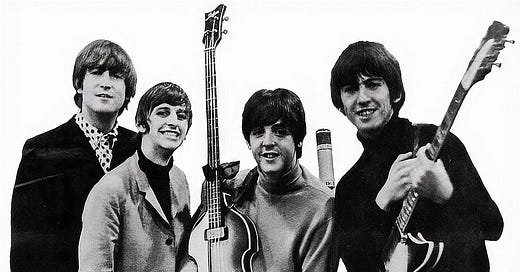



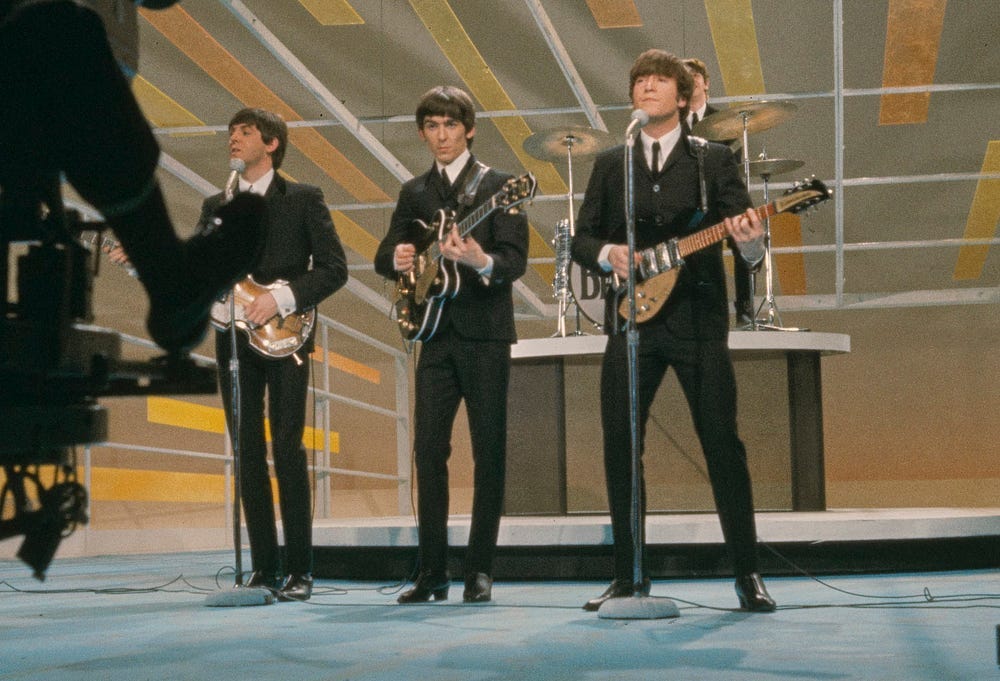
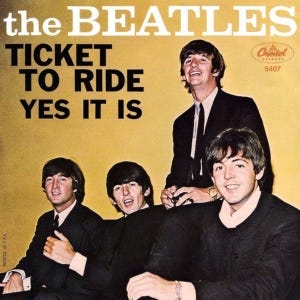


All the details about playing drums setup for right-handed people when left-handed is so much like everyday juggling I do to get along in a right-handed world.
It is interesting that ten percent of the world is left-handed but in my family four of the five children in our family are left handed.
I never thought playing the drums left handed would make such a difference. Watching the drummers play like Ringo is great in the video.